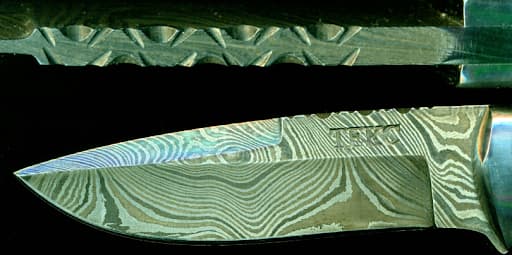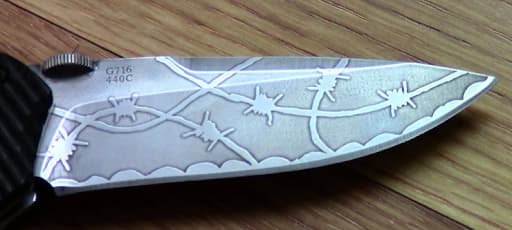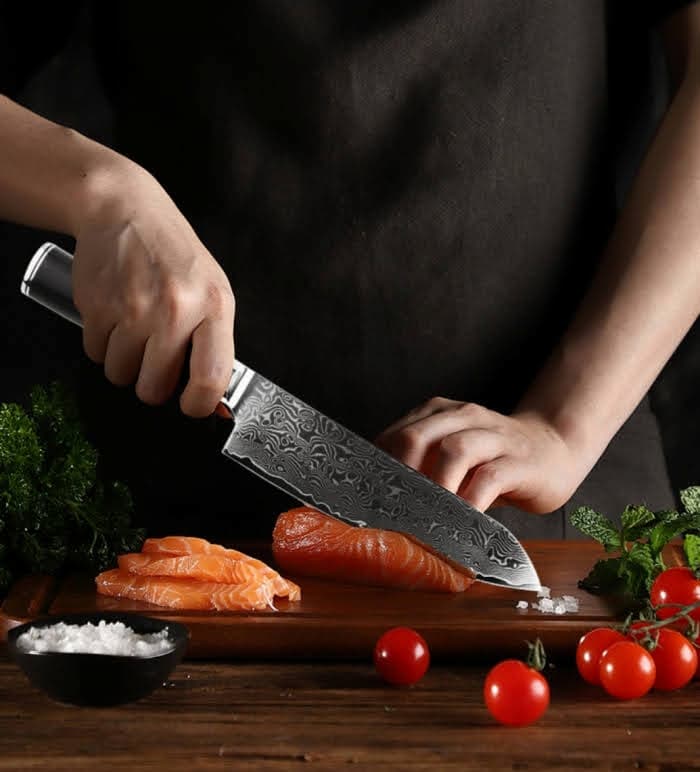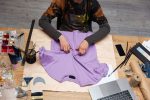The Art of Knife Etching – Personalising your Chef’s Knife
Chef knife engraving is a special process that enables the owner to add more custom look and unique design to his or her knife. Unlike in early years when artisans used to carve their tools with unique patterns, modern knife etching has become an aesthetic practice. This process includes the creation of designs or text on the blade and results in a unique knife that can represent the owner or the firm. Apart from the aesthetic value, etching can be also utilitarian, as a knife is etched with the owner’s name or initials in a large professional kitchen.
Techniques of Knife Etching
Knife makers have been using various techniques to etch their knives and the following are some of the widely used methods and their merits and demerits. Laser carving involves heating the surface of the knife through the use of a laser beam which melts the surface and forms the desired designs. This is preferred due to its precision in delivering detailed patterns and texts. Hand engraving is an old school method that entails the carving of the designs on the blade by using chisels known as gravers and burins.
This methodology gives an excellent opportunity for creativity and individualism but demands much practice and efforts. Acid etching, on the other hand, entails placing an acid-resistant material on the knife, then applying an acid solution whereby the uncovered metallic surface will be corroded to create the desired design.
Every method has its own equipment and precautionary measures and the approach may vary depending on the result that a professional etcher wants to achieve.
Designing Your Etch
Choosing the right design for your knife etching involves balancing personal preference with practicality. Popular design options include initials, family crests, and custom motifs that hold special meaning. When selecting a design, consider how it will complement the knife’s overall look and functionality. Custom designs offer the opportunity to create something truly unique, tailored to personal tastes or professional branding needs.
For those who prefer not to start from scratch, pre-designed templates can provide inspiration and streamline the process. The design should be well-considered to ensure it enhances rather than detracts from the knife’s usability.

Steps to Etch a Knife
The etching process varies depending on the technique used. For laser etching, the knife is first cleaned thoroughly to ensure that no contaminants affect the design. The desired pattern is then programmed into the laser machine, which precisely engraves the design onto the blade.
Hand engraving requires careful preparation, including selecting the right tools and materials. The engraver uses a steady hand to carve the design into the metal, a process that can take several hours depending on the complexity. Acid etching involves applying a protective coating to parts of the blade, then immersing it in an acidic solution. The acid eats away at the exposed metal, creating the design. Safety precautions, such as wearing protective gear and working in a well-ventilated area, are essential for all methods.

Maintaining Etched Knives
Etched knives require specific care to maintain both their functionality and appearance. Regular cleaning with a non-abrasive cloth and mild soap helps to prevent damage to the etched design. It’s important to avoid harsh chemicals and abrasive scrubbers, which can wear down the etching and compromise the knife’s surface. Over time, etchings may show signs of wear, especially with frequent use. To address this, professional touch-ups or refinishing may be needed to restore the design’s clarity and detail. Proper maintenance ensures that your knife remains a beautiful and functional tool for years to come.
Personal and Professional Significance
Personalised knives hold significant value beyond their practical use. As gifts, they offer a thoughtful and memorable way to celebrate special occasions or achievements. In a professional context, such as a chef’s kitchen, a custom-etched knife can serve as a powerful branding tool, setting a chef apart and reinforcing their personal or business identity. The act of personalising a knife can also deepen the connection between a chef and their tool, enhancing the cooking experience and adding a touch of individuality to the culinary process.
Choosing a Professional Etcher
Selecting a skilled professional to etch your knife is crucial for achieving a high-quality result. Look for an etcher with a solid reputation and proven experience in the technique you prefer. Reviewing their portfolio and discussing your design ideas can help ensure that they understand and can execute your vision. Effective communication is key to achieving the desired outcome, so be clear about your expectations and any specific requirements. A reputable etcher will not only have the technical skills but also the artistic sensibility to bring your design to life.
Legal and Ethical Considerations
Legal and ethical consideration can possibly come up when etching knives. Custom designs might contain legal issues thanks to the concept of copyrighted materials or trademarks.
To further avoid legal issues, be certain that the design you use is your own or that it has a license to be used. The ethical consideration involves selecting an appropriate etcher who is likely to embark on a correct process of customisation.
Paying attention to these points allows you to avoid violating the law and, at the same time, remain moral and ethical in your choice of a knife.

Conclusion
The art of knife etching provides a chance to make a wonderful Chef Knife unique to the style of the owner or the company logo. Share more insights on https://sakutoknives.co.uk/collections/knife-sets Sakuto knives. Right from the type of etching to be done, the kind of design and how the knife is to be used and maintained, every single detail is an amazing part of a production that culminates into a unique kitchen necessity.
As a weapon or a trophy, an etched knife is an elegant tool and a symbol of gastronomic performance that improves the process itself. This act of knife etching not only brings extra character but also pays a tribute to the craftsmanship that is used in culinary services.
![[AD] We went to the newly opened Cha Sha Kingston a couple of weeks ago, and wow — taste bud adventure unlocked! The boys devoured the masala fries and chicken tikka rolls, while we couldn’t get enough of that epic kebab butter curry 😍🍛.
It’s amazing value for food this tasty (and everyone left happy and VERY full!).
Delicious food, vibrant vibes and incredible value — the perfect combo for your next meal.
📍Cha Sha Kingston
43 Surbiton Road, KT1 2HG
🌐 chasha.co.uk
Other Cha Sha locations in Birmingham, Ilford, Southampton and Wembkey
#ChaSha #ChaShaKingston #KingstonEats #FoodieFinds #UKFoodie #FoodReview #KingstonUponThames #FamilyEats #FamilyDining #FoodieKids](https://suburban-mum.com/wp-content/uploads/2016/02/574770541_18560351146016840_6855048070839528040_n-180x320.jpg)

![[AD] We’re a cricket-mad family, so we’re buzzing that @thehundred is back this August! 🏏🔥
To get ready, M tried out the official FREE Activity Pack — and it’s brilliant! 🙌
Packed with fun games, creative challenges and sporty tasks, it’s perfect for getting kids hyped whether you’re at home or on the go.
👉Download yours now (link in bio)
@londonspirit @ovalinvincibles #EveryMomentCounts #TheHundred
#EnglandCricket #CricketFamily #TheHundredCricket #LondonBloggers #Cricket #CricketIsLife #kidsfun](https://suburban-mum.com/wp-content/uploads/2022/11/505472555_18531279601016840_7092520074819907569_n-180x320.jpg)



![[AD - Press visit]
We enjoyed the glorious sunshine this weekend with a trip to Brighton. We went on the @brightoni360official which is right by the sea front.
The i360 pod take a slow journey up, allowing you to take in views across Brighton and the South Downs 450ft above ground. There’s a bar inside with drinks and snacks available to purchase and the experience lasts 25 minutes.
Afterwards, we headed to the open air roller rink for a roller skating session!
The roller rink is:
⭐ Suitable for over 5s
⭐ £6.50 if you have your own skates or £9.50 if you need to hire them
⭐ 45 minutes per session
Full details to visit the i360 + skating
📍 Brighton i360, Lower Kings Road, Brighton BN1 2LN
🚗 Parking nearby (we parked in the Regency Square Car park)
🎟️ Prices start from £25.40 for an adult and £16.90 for a child
🕐 Opening hours are currently Sun-Fri 10.30am-18.30pm and until 19.30pm on Saturdays
☕️ Bar inside the i360, cafe and gift shop
Book tickets here:
https://tickets.brightoni360.co.uk/tickets/?_ga=2.195305772.1869001490.1689671753-1757164059.1689671753/#events?eventid=157](https://suburban-mum.com/wp-content/uploads/2015/04/417980235_313576471048632_3682382982231216432_n.jpg)

![[AD] ***Summer of fun at Barracudas Activity Camps!****
There is plenty for kids to do at @barracudas_activity_day_camps
From Tennis, Archery, Swimming, Motor Sports and more you can be sure that there will be something for kids aged 4.5-14. ⚽🏈🥅🎾🏓🏎️🏹🏊♂️🏉
You can book on a day by day basis - so it can fit in with any other days out/activities you have planned and there are early drop off and late pickup options available. Barracudas are also Ofsted registered so you can use your Childcare Vouchers too.
⭐⭐⭐Get £20 off a week or £4 off a day using my discount code: MARIA20⭐⭐⭐
#BarracudasActivityDayCamp #BarracudasActivityCamp #BarracudaAmbassadors #SummerHolidays #SchoolHolidays #Summer2023 #SummerCamp #DayCare #Camp #KidsCamp #surreymummy #surreymums #SummerOfFun #ActivityCamps #HolidayCamps #Childcare #SchoolHolidays #schoolholidaycamps](https://suburban-mum.com/wp-content/uploads/2024/07/353583570_625625966167953_545896259645102575_n.jpg)



![[AD] We have some super exciting news...we have been chosen to be Laser Quest Ambassadors, and the boys are over the moon!
We are really lucky that our local Laser Quest (@laserquestkingston) is just around the corner from us. It means we can pop in of a weekend or anytime during the school holidays, and with summer just around the corner, I know Laser Quest will be one of our go-to places for some family fun.
As well as games of Laser Quest, there are also VR experiences and arcade amusements too. To find out a bit more about how Laser Quest works, you can read my blog post: https://www.suburban-mum.com/laser-quest-kingston/ (clickable link in bio)
Don't forget to keep an eye out for our Laser Quest posts - I'm going to be giving away two family passes to use at Laserquest Kingston!
If you can't wait and want to head down to Laser Quest to try it out, use the code SUMMER30 for 30% off your booking. The code is valid from now until the end of August 2023 and can be used on Laser Quest games and birthday party bookings.
#LaserquestAmbassador #Laserquest #LaserquestKingston #ActivitiesForKids #FamilyFun #DaysOutWithKids #Lasertag #LaserquestVR #Kingston #ThingsToDoInKingston #SurreyFamilyDaysOut #ThingsToDoWithKids #RainyDayFun #SurreyMummy #SurreyLife #LifeWithKids #LifeWithBoys #familyfunday](https://suburban-mum.com/wp-content/uploads/2015/04/353230107_797358078406942_2405522556733455165_n.jpg)

![[AD] The sun has finally made an appearance and the boys have been making the most of it by spending it
in the garden.
They’re go-to is always football and they’ve been trying to improve their aim and accuracy with the new Messi Foldable Footlball goal from the #MessiTrainingSystem range.
I love the fact the goal is foldable, making it easy to store away when not in use. It is also lightweight so you can effortlessly pack it up and take it to the park or to a friend’s house.
The Messi Foldable Football Goal retails at £36 and can be purchased from @argos
You can read my full review here: https://www.suburban-mum.com/messi-foldable-football-goal/
#TrainLikeMessi #FoldableFootballGoal #FootballSkills #OutdoorFun #LionelMessi #LeoMessi #FootballAtHome #OutdoorKids #JustGetOutside #OutdoorsAndFree #ScreenFreeKids #WhateverTheWeatherKids @flair_gp](https://suburban-mum.com/wp-content/uploads/2015/04/341194882_615024710178056_41977149395989448_n.jpg)

![[AD] We are absolutely thrilled to announce that we are Barracuda Ambassadors again this year.
With Easter just around the corner, the boys were sent the @barracudas_activity_day_camps new camp kit in preparation for the school holidays.
There’s a wide range of activities for kids aged 4.5 - 14 including Tennis, Archery, Basketball, Arts & Crafts and more.
If you like the sound of Barracudas, find out more over on their website. You can also save £20 a week or £4 a day, using my discount code: MARIA20](https://suburban-mum.com/wp-content/uploads/2024/07/336812306_765234558514317_685553691647241974_n.jpg)


![[AD - Gifted]
Last weekend we were invited to try out @tsarettaspice’s new Bottomless Brunch menu and I can tell you it was thumbs up all round!
There’s a good choice tapas on offer from Punjabi fish fingers, Indo Chinese Chicken to Spiced Lamb Scotch Eggs and Manchurian Cauliflower (which was amazing!)
If you’re local to Twickenham and fancy giving them a try here’s are the details.
Tsaretta Spice Bottomless Brunch
⭐️£37.50 per head for bottomless Prosecco or cocktail of the day
⭐️£55 per head for bottomless Champagne
⭐️ Food included: 4 tapas selections and dessert or 2 tapas selections, a pav or naanwich and dessert
⭐️ Non-alcohol brunch is also available
Tsaretta Spice
55 Church Street
Twickenham
TW1 3NR
You can also read our full review over on the blog (link in bio)](https://suburban-mum.com/wp-content/uploads/2024/07/334565436_5960402314015030_663031098700829518_n.jpg)



